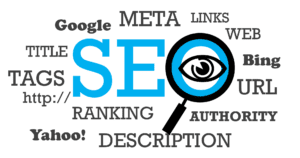Embedded analytics and business intelligence tools are changing how enterprises use and share data insights. In the past, there have been lots of gatekeeping involved with analytics programs. IT and data teams have pretty much held exclusive rights to analytics. But this is all changing, in large part due to embedded BI and analytics tools.
With traditional BI, users need to continually toggle back and forth between different programs to use tools. Not only is this a waste of time, but it can also lead to confusion and lost progress when things are accidentally closed or not saved. Embedded BI is a radical redesign of this process, as it allows you to place analytics tools within a workflow instead of having to design the flow around the tools. As mentioned by Gartner, “embedded analytics tends to be narrowly deployed around specific processes such as marketing campaign optimization, sales lead conversions, inventory demand planning, and financial budgeting.”
With more tightly defined BI protocols, users can efficiently get what they need without parsing through unnecessary information. Here are some things to consider when selecting the best embedded BI tools.
How Fast Can You Start Using It?

Adopting and implementing new technologies too fast can lead to oversights and errors. At the same time, however, you want to get your new BI tools up and optimizing your operations as soon as possible. The time from purchase to operational is one of the big things you need to think about when looking at BI tools.
There are lots of embedded BI options on the market that sound great. But are they actually going to deliver on those promises—and in a timely manner? Working with cloud-based providers is typically pretty expedient, as their products are designed to be lightweight and functional. You should also look at customer reviews to see any consistently negative comments about the rollout. The sooner you can get embedded BI tools functional, the sooner you can start using them to optimize your organization.
How Much Does It Cost (Really)?
Cost is always something that needs to be carefully looked over when adopting anything new for your business. It’s important to note that when it comes to BI tools, the upfront costs often aren’t going to be the only expenses.
Beyond the amount you pay immediately, you’ll also want to think about maintenance or subscription costs. Depending on what route you take for embedded BI, there’s likely going to be some sort of ongoing expenditure. Cloud products generally charge a monthly or annual subscription fee. Products you run on-site will require you to pay to keep machines and servers running and will likely need to be periodically updated.
You also might want to consider potential opportunity costs associated with various embedded BI choices. Are you going to be missing out on some really important analytics power that could save you money by choosing a cheaper upfront option? These are all ideas that should be thought through before deciding on a BI provider.
What Are Some Concrete Justifications?

Of course, you want to save money and make your business more efficient. Every executive on Earth wants that. But what are some specific problems you think embedded BI will address and allow you to accomplish that?
It doesn’t make sense to spend resources on something when you can’t concretely justify it. If you can’t see why your organization might need to use a certain function or tool, don’t get it. Most cloud-based BI platforms are flexible and scalable, meaning you can add or subtract services as you need them. Don’t opt into anything until you have a legitimate reason for doing so.
Embedded BI is allowing organizations to use data more effectively than ever before. However, it’s still important to do some research and choose the BI tools that work best for your unique situation.
Featured Image by Pexels from Pixabay




